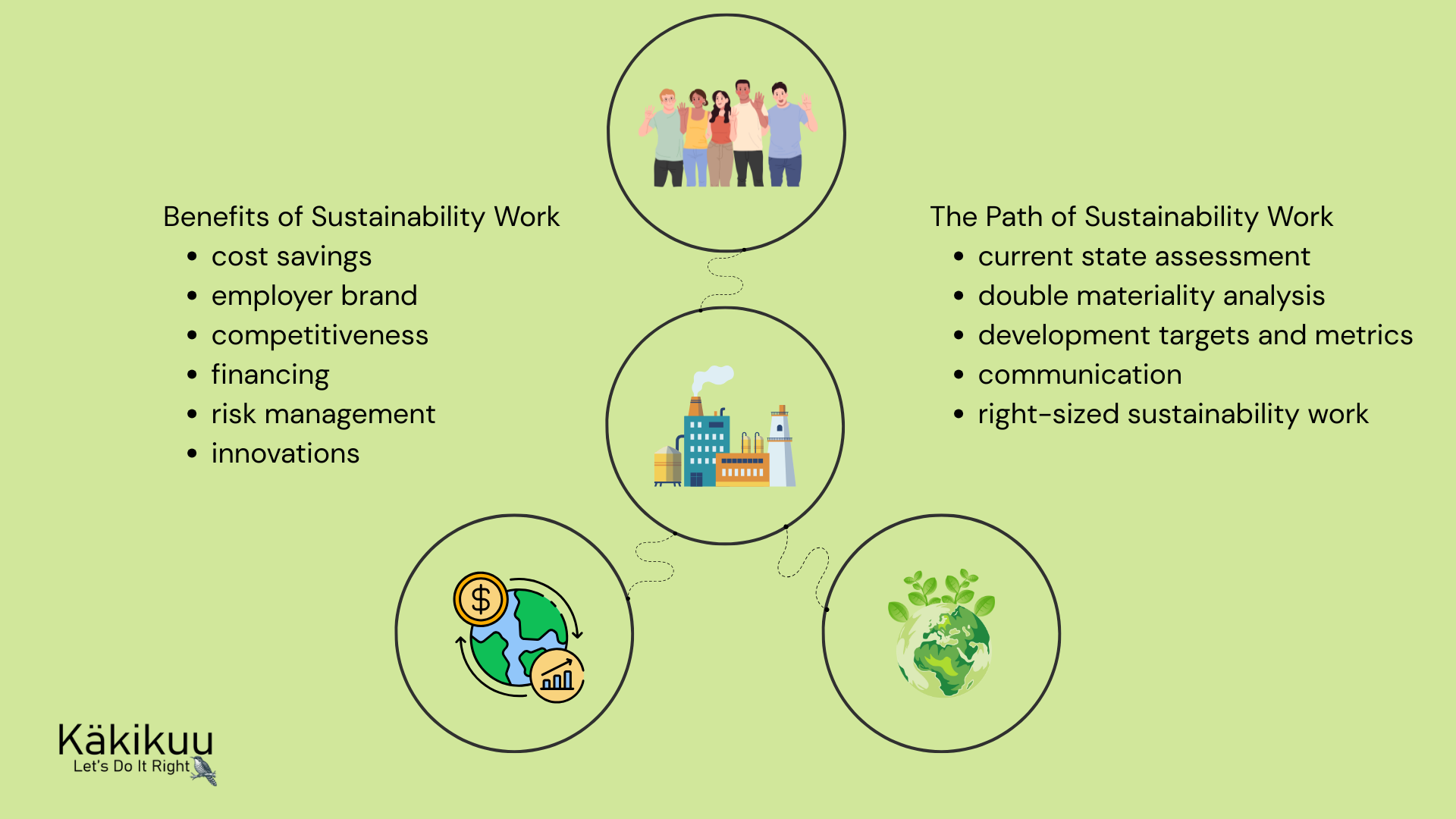Sustainability work refers to actions aimed at reducing environmental impacts and improving economic, social, and ecological sustainability. This work can be carried out at all levels—from individuals and communities to entire societies. The so-called rebound effect refers to a situation where the benefits achieved through sustainability efforts are partially or entirely offset. In this blog post, I will discuss the rebound effect, how it manifests, its impact on sustainability work, and ways to manage it.
–
What is the Rebound Effect?
The rebound effect refers to a situation where technological advancement or efficiency improvements—intended to reduce resource consumption or environmental impact—ultimately lead to increased resource use and even greater environmental impact. This paradoxical outcome often arises as a result of changes in human behavior.
The rebound effect can manifest in various ways. Generally, it can be divided into direct and indirect rebound effects:
A direct rebound effect occurs when a technological improvement makes the use of a product or service cheaper, leading people to use it more. For example, when households purchase more energy-efficient appliances, they may end up using them more frequently or buying additional devices because the unit cost of energy is lower.
An indirect rebound effect occurs when the savings generated by a technological improvement are spent on other environmentally intensive activities. For example, if households save money on energy costs, they might use those savings for travel, which in turn increases their environmental impact.
–
Examples of the Rebound Effect
Energy-efficient appliances
Energy-saving light bulbs and energy-efficient household appliances can be examples of the rebound effect. Although they consume less energy than traditional devices, increased usage may result in overall energy consumption not decreasing as expected. For instance, households may leave lights on longer or use appliances more frequently because using energy feels cheaper.
Fuel-efficient cars
The adoption of fuel-efficient cars is also a classic example. When cars consume less fuel, drivers may choose to drive more kilometers without significantly increasing their fuel costs. As a result, the overall fuel consumption may not decrease as expected, and emissions from transportation may remain the same—or even increase.
–
The Impact of the Rebound Effect on Sustainability Work
The rebound effect poses challenges to sustainability work, as it can partially or entirely offset the benefits achieved. From this perspective, it becomes clear that technological improvements alone are not sufficient to reach sustainability goals. Behavioral changes and policy measures that support sustainable choices are also needed. A shift in consumption behavior is a necessary part of the systemic change required for sustainability.
–
Managing the Rebound Effect
Various strategies can be used to manage the rebound effect:
1. Raising awareness: Increasing awareness among consumers and businesses about the rebound effect can help reduce its impact. When people understand that efficiency improvements may lead to increased consumption, they are more likely to make informed and conscious choices.
2. Regulation and incentives: Policy measures such as emissions trading schemes and energy efficiency standards can help curb the rebound effect. Regulation can prevent excessive consumption, while incentives can guide savings toward sustainable consumption.
3. Sustainable Lifestyles: Promoting sustainable lifestyles—such as reducing overall consumption and favoring renewable energy sources—can help reduce the risk of the rebound effect. This may include increasing the use of public transportation and implementing circular economy solutions.
–
The rebound effect is a significant challenge in sustainability work, and understanding it is key to developing effective and lasting solutions. While technological improvements are important, they are not sufficient on their own to achieve sustainability goals. It is essential to consider human behavior and implement policy measures that encourage sustainable choices. Only by doing so can we ensure that sustainability efforts lead to real and lasting improvements in the state of the environment and our society.




0 Comments